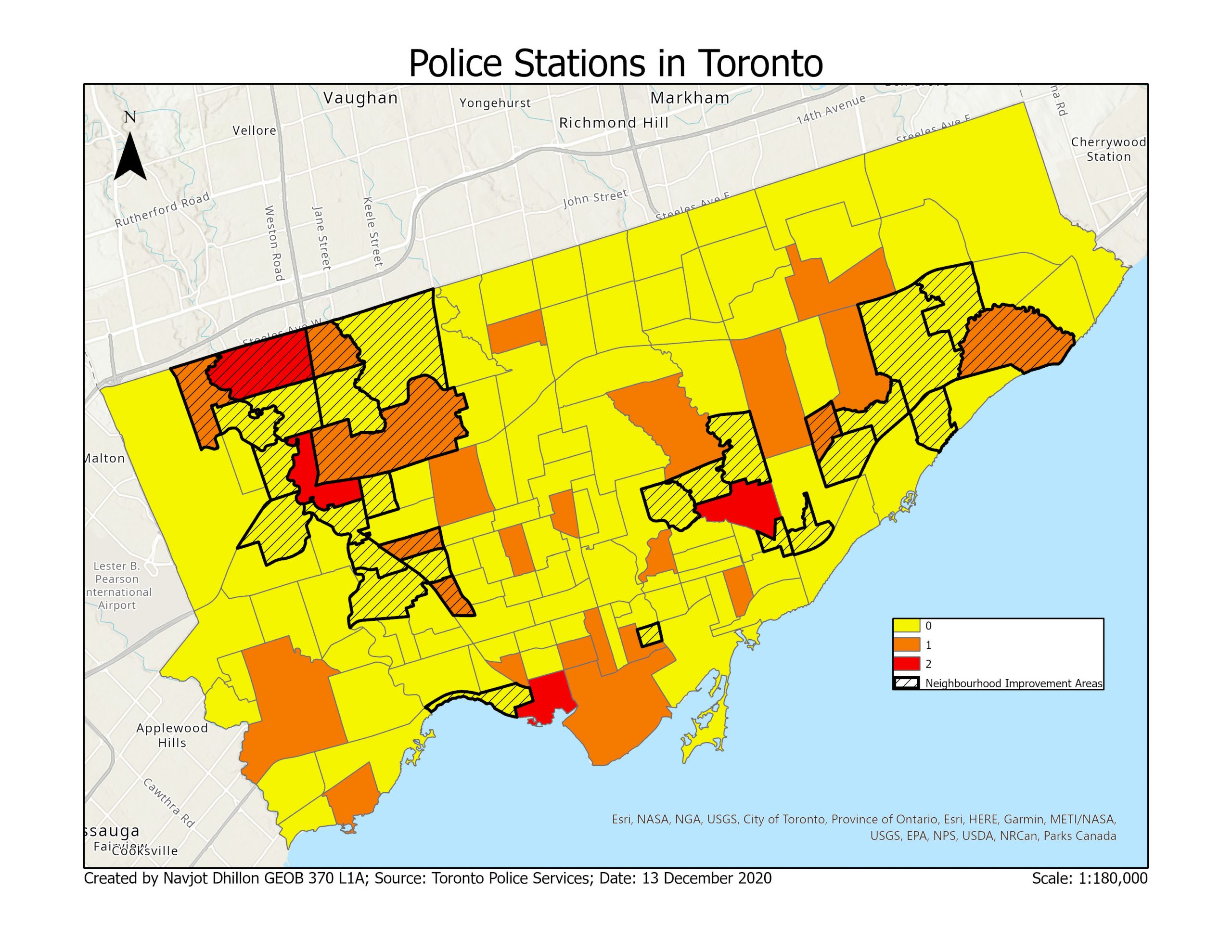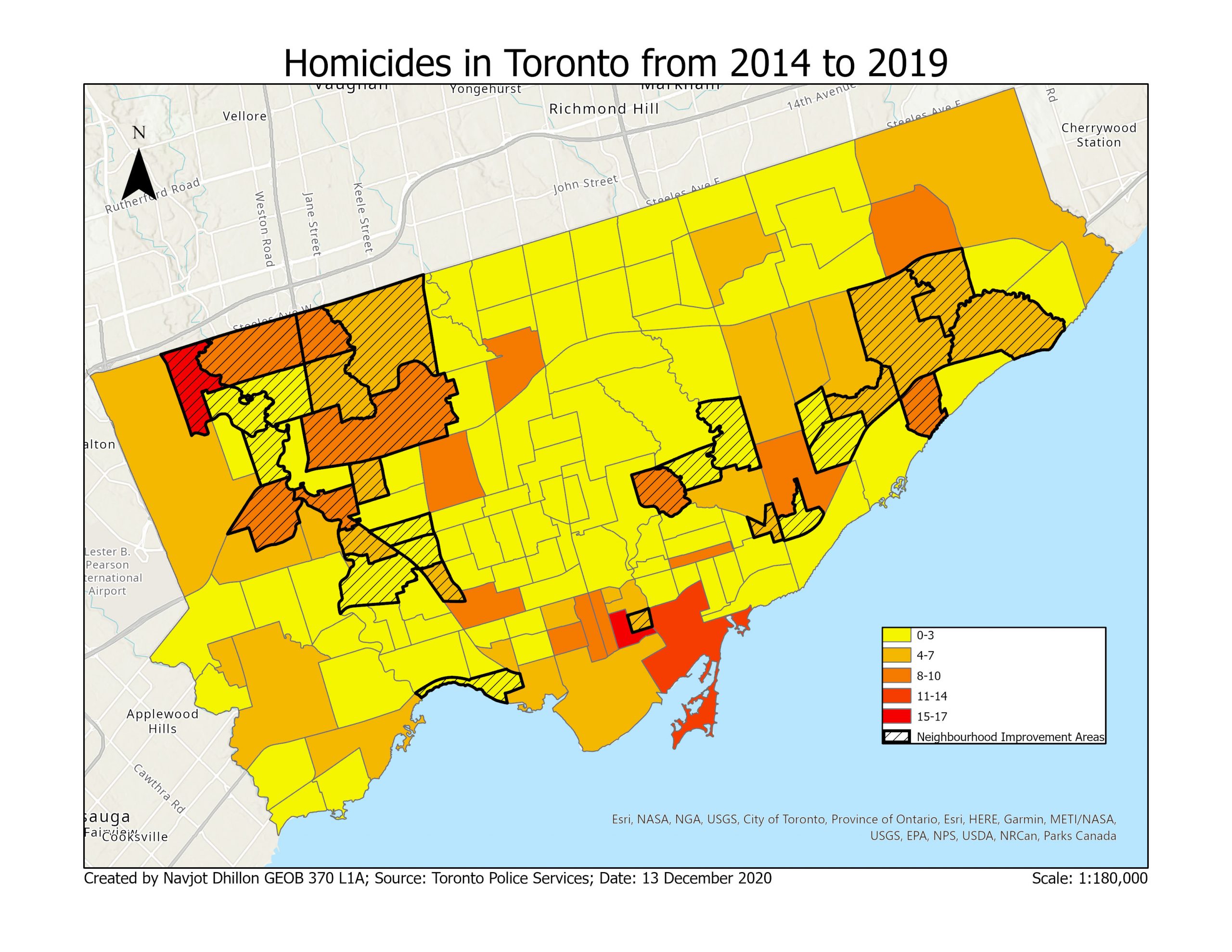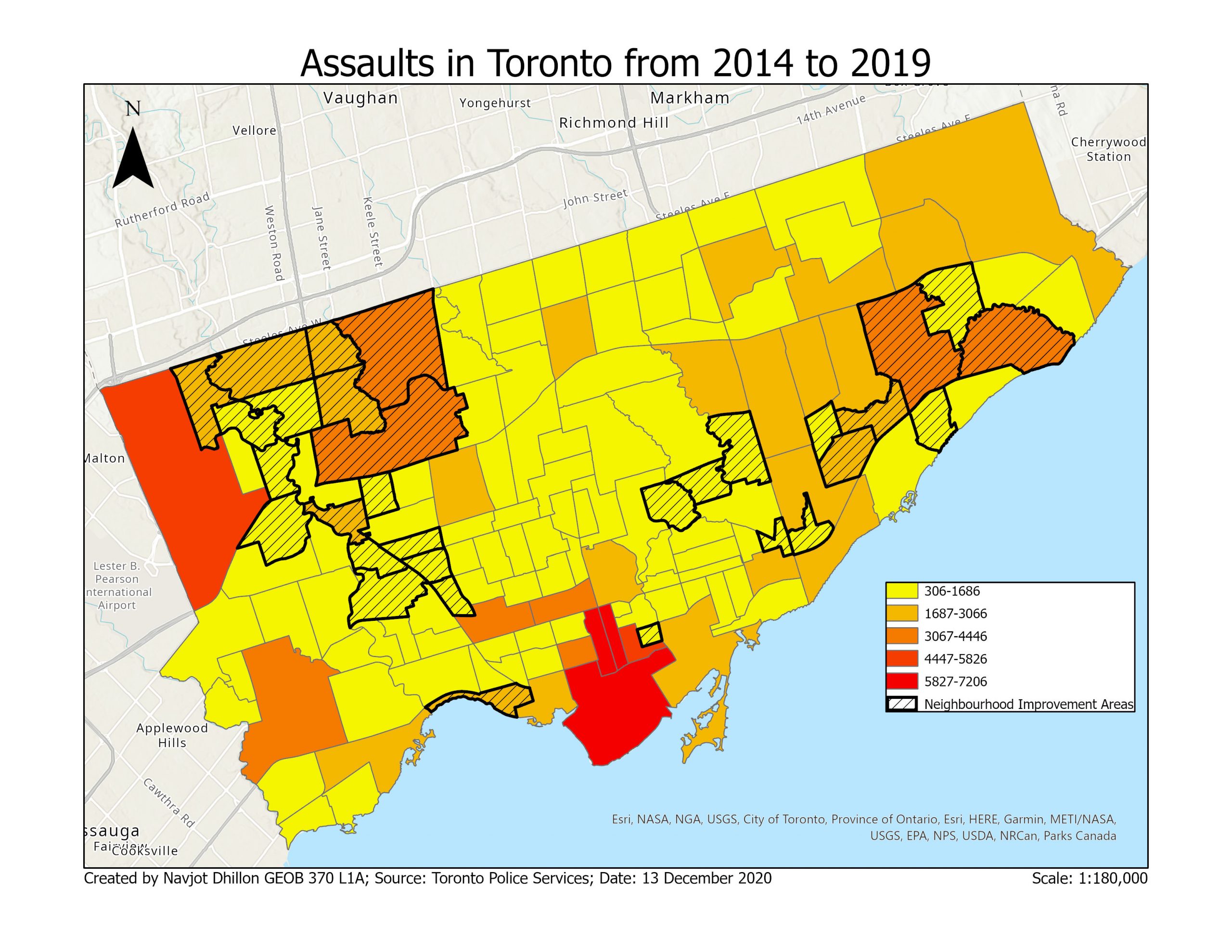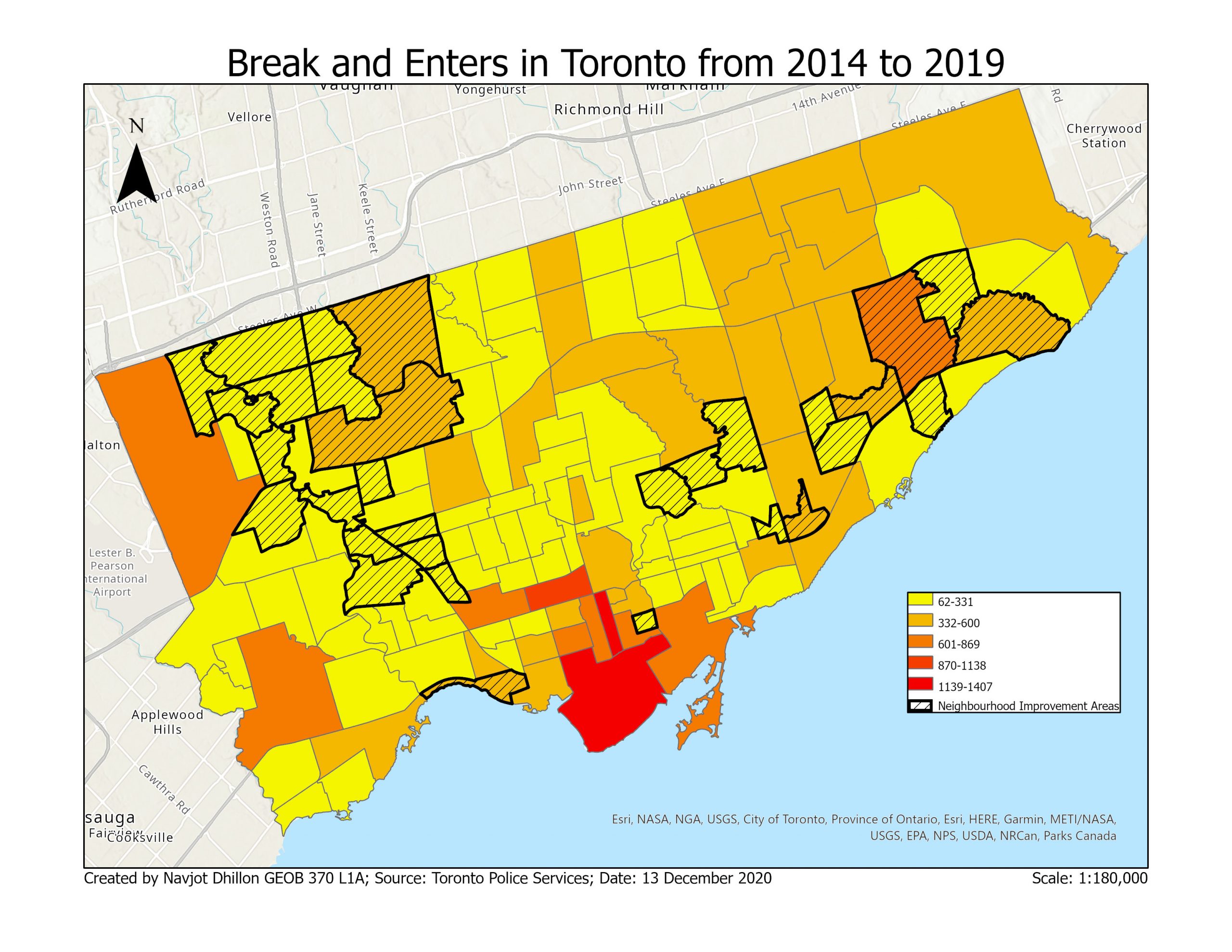This project analyzes the impact of Police, Community Housing locations and Transitional Housing locations on crime from 2014 to 2019. I chose police stations as I was curious whether police presence reduces or raises the likelihood that crime occurs in an area. I also wanted to evaluate whether having a troubled background as a child has any substantial impact on whether crimes happen in an area measured using the transitional housing locations. Finally, I wanted to see whether low income has any effect on the presence of crime. I chose community housing locations to investigate whether living in housing units provided by the city in a neighbourhood with other low-income individuals affects the presence of crime. Additionally, this project evaluates whether the “Priority Investment Neighbourhoods” dataset, as identified by the City of Toronto, encapsulates the neighbourhoods that have been significantly impacted by crime. These neighbourhoods have been identified by the city of Toronto as neighbourhoods that perform worse than other neighbourhoods on several well-being indicators.
The crimes that analyzed are homicides, break and enters and assaults. These crimes were chosen due to their severity, ease in identifying these crimes and a large number of occurrences.
The following maps indicate the number of crimes that have occurred from 2014 to 2019 and indicate the number of community housing units and police stations in each neighbourhood. Additionally, they also indicate which neighbourhoods have been designated as Neighbourhood Improvement Areas by the city of Toronto.




